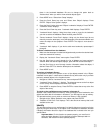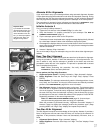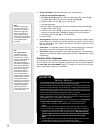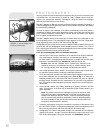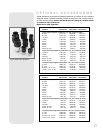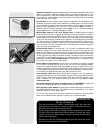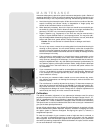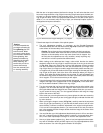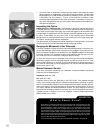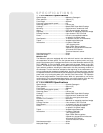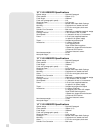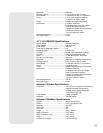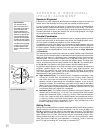
43
Fig. 28: Illuminated Reticle Eyepiece.
Fig. 29: #62 T-Adapter.
Piggyback Brackets: Piggyback photography is one of the most popular and easiest
ways to get started in astrophotography. Attach your 35mm camera, with its own
35mm-to-250mm lens, atop your
LX200GPS in equatorial mode, and guiding the cam-
era through the main telescope, wide-field photos of the Milky Way of remarkable
detail and clarity can be taken.
Dew Shields: In moist climates, water particles suspended in the atmosphere may
condense on the front surface of the telescope's correcting plate. This dew formation
may be inhibited to a significant extent by the addition of a dew shield, essentially an
extension tube attaching to the front-cell of the telescope. #608 for Meade 7"
Maksutov and 8" Schmidt-Cassegrain models; #610 for all 10" Schmidt-Cassegrain
models; #612 for all 12" Schmidt-Cassegrain models.
#905 Variable Polarizer (1.25"): #1A Skylight Filter: The #905 system includes 2
Polarizer filters mounted in a specially-machined cell, for glare-reduction in observ-
ing the Moon. Rotate the thumbscrew at the side of the unit to achieve light trans-
mission between 5% and 25% of its original value. The #905 inserts into the diago-
nal prism of the telescope, followed by an eyepiece. The #1A Skylight Filter threads
onto the rear cells of all Meade Schmidt-Cassegrains and effectively seals the inte-
rior of the telescope from dust. All other rear cell accessories may then be threaded
to the #1A filter. The filter increases visual and photographic contrast, decreases
glare, and helps to penetrate haze.
#1220 Field De-rotater: For use with the 7", 8", 10" and 12"
LX200GPS models in the
altazimuth mode, the field de-rotater attaches to the rear cell of the telescope and
plugs into an RS232 port. Digital data fed from the telescope's microprocessor to the
field de-rotater permit precise and continuous update of the de-rotation required to
maintain pinpoint star images throughout the field. The effect is that even during the
longest CCD or photographic exposures, the telescope acts as if it were precisely
equatorially mounted. #1222 Field De-rotater: For use with the 16"
LX200GPS. Plugs
into a special connector on the control panel.
Epoch
2000sk-CD Sky Software: Epoch 2000sk is a powerful sky software supplied
on a CD-Rom, allowing users to click on any one of 19 million database objects,
including the complete Hubble Guide Star Catalog, to display an object's name, coor-
dinates, magnitude, object type, and description. Other features allow a user to zoom-
in on telescope fields smaller than one arc second, locate planets to a precision of 0.1
arc seconds, print professional quality star charts, and much more.
LX200 Interface Cable: With Meade Epoch 2000sk loaded into your PC, Autostar II-
equipped telescopes, such as the
LX200GPS, may be remotely controlled from the PC
display. Used to download the latest satellite data, star and object catalogs, tours,
serial commands list, and software revisions, directly from the Meade website
(www.meade.com).
#547 Power Adapter with Cable (all models except 16” LX200GPS): Includes a 25
ft. cord and permits powering from a standard home (115v AC) outlet.
#607 Cigarette Lighter Adapter: Powering the
LX200GPS telescope by means of an
automobile cigarette lighter plug. The
LX200GPS may be powered for a full night’s
observing without risk of car-battery drain.
To find out more about these and other accessories available for your telescope,
check out the Meade General Catalog or contact your local Meade dealer.
LX200GPS TIPS
Star Charts
Even with the Autostar II's massive 145,000 object library, star charts and
planispheres are still useful for a variety of reasons. In particular, they are a
great aid in planning a night of celestial viewing.
A wide variety of star charts are available in books, in magazines, on the inter-
net and on CD Roms. Meade offers Epoch 2000sk
™
and other star locator
software. Contact your Meade dealer or Meade's Customer Service depart-
ment for more information.
Astronomy and Sky and Telescope magazines print star charts each month
for up-to-the-minute maps of the heavens.



